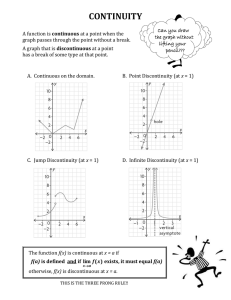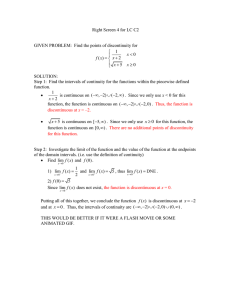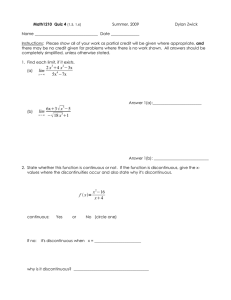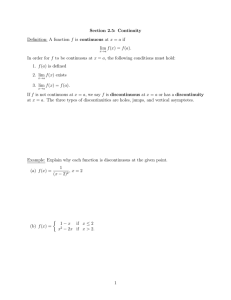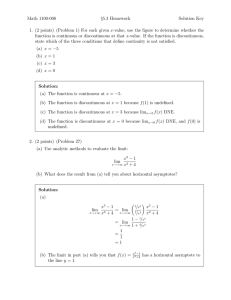Section 3.2: Continuity lim f (x) = f (a).
advertisement
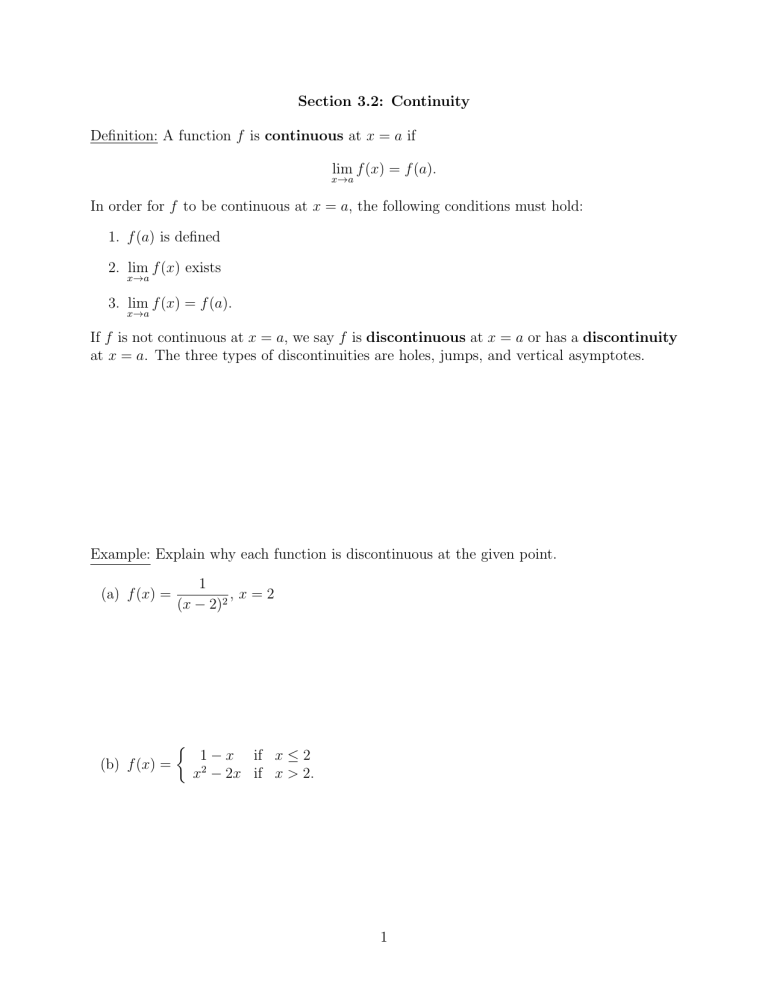
Section 3.2: Continuity Definition: A function f is continuous at x = a if lim f (x) = f (a). x→a In order for f to be continuous at x = a, the following conditions must hold: 1. f (a) is defined 2. lim f (x) exists x→a 3. lim f (x) = f (a). x→a If f is not continuous at x = a, we say f is discontinuous at x = a or has a discontinuity at x = a. The three types of discontinuities are holes, jumps, and vertical asymptotes. Example: Explain why each function is discontinuous at the given point. (a) f (x) = 1 ,x=2 (x − 2)2 (b) f (x) = 1 − x if x ≤ 2 x2 − 2x if x > 2. 1 x2 − 2x − 8 if x 6= 4 (c) f (x) = x − 4 3 if x = 4. Example: Find the points at which f is discontinuous 2x + 1 if x ≤ −1 3x if −1 < x < 1 f (x) = 2x − 1 if x ≥ 1. 2 Example: Find the constant c that makes g continuous on (−∞, ∞) g(x) = x2 − c2 if x < 4 cx + 20 if x ≥ 4. Example: Find the values of a and b that make 2x ax2 + b f (x) = 4x 3 f continuous on R. if x < 1 if 1 ≤ x ≤ 2 if x > 2. Definition: A function f is continuous from the right at x = a if lim f (x) = f (a). x→a+ Similarly, f is continuous from the left at x = a if lim f (x) = f (a). x→a− Example: The graph of a function f is given below. State the numbers at which f is discontinuous. For each point of discontinuity, state whether f is continuous from the right, left, or neither. 4
